Looking to add some greenery to your home but don’t get much natural light? Don’t worry there are plenty of low-light indoor plants that can thrive in shady corners and brighten up any space. In this article, we’ll cover 17 of the best low-light houseplants along with care tips, pros and cons for each one. Discover which hardy, low-maintenance plants are ideal for low-light rooms and how to help them flourish.
Large Snake Black Coral

Water: Every two to three weeks, allowing soil to dry out between waterings.
The Large Snake Black Coral is an easy-to-grow plant with intricately curled leaves that resemble corals.
This low-light plant has lush dark green and black foliage that adds drama and texture. It can adapt to a range of indoor conditions, only needing moderate water and low to medium light. Slow growing, it stays compact enough for shelves or tabletops.
- Pros: Beautiful curled leaves, low maintenance, doesn’t require much light or water.
- Cons: Has potential to get leggy if light is too low. Slow growing.
Rabbit Foot Fern

Water: Once a week.
The Rabbit Foot Fern is a whimsical plant with furry-looking rhizomes and long, bright green fronds. This small plant looks great in hanging baskets or terrariums.
With proper care, the Rabbit Foot Fern can handle low to medium indirect light. Let the soil dry out some between waterings and maintain humid conditions. Trim off any dead or dying fronds to encourage new growth.
- Pros: Cute and fuzzy looking, easy care, stays small.
- Cons: Requires humid conditions, prone to brown fronds if too dry.
American Plant Exchange 30″ Live Prayer Plant Plant in Pot

Water: Every two weeks.
With distinctly veined oval leaves that fold up at night, the Prayer Plant is an architectural beauty. Named for the way its foliage folds together in evening hours as if in prayer, this plant offers visual interest day and night.
This plant thrives in low to medium indirect light. Allow the soil to dry out some between waterings. Mist occasionally to increase humidity. Prune off any dead leaves or stems to encourage growth.
- Pros: Beautiful foliage movements, easy care, visually striking.
- Cons: Can be dramatic if light or humidity changes. Susceptible to root rot if overwatered.
Parlor Palm

Water: Every one to two weeks.
A compact palm with glossy, arched fronds, the Parlor Palm is a tropical classic. This small tree-like plant is easy to grow and handle low light conditions.
Slow growing, the Parlor Palm needs bright indirect light but can manage in low light spots. Allow soil to dry out between waterings. Wipe leaves occasionally to remove dust buildup. Trim off dead fronds as needed.
- Pros: Graceful arching fronds, easy maintenance, tolerates low light.
- Cons: Slow growing, prone to browning tips if under or overwatered.
The Sill Aglaonema Wishes
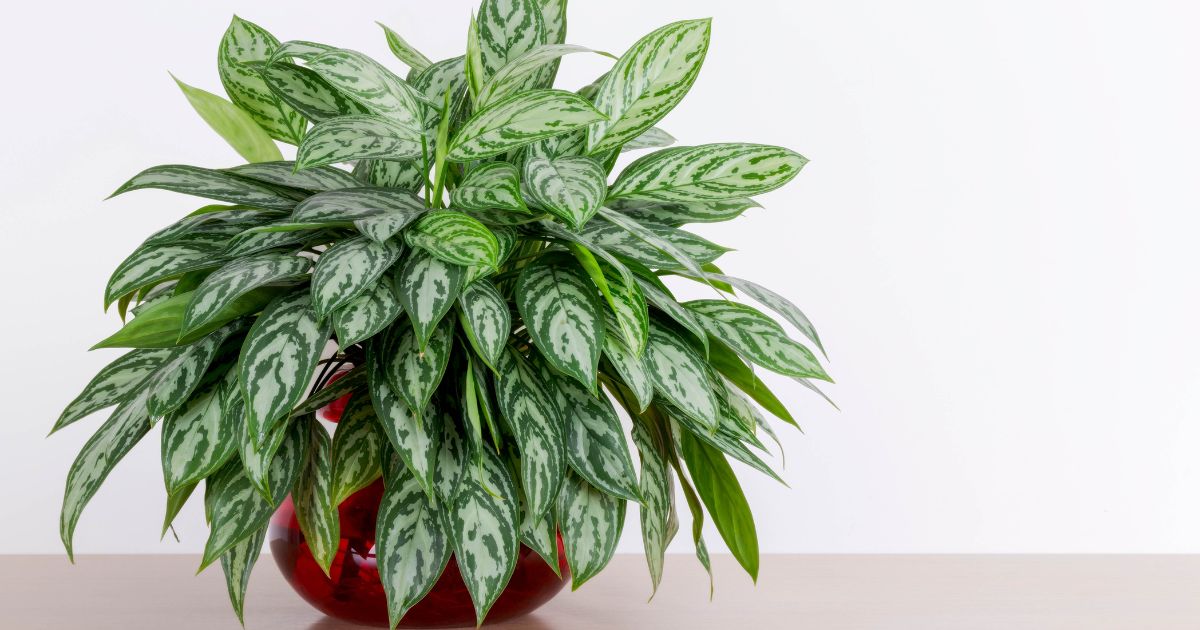
Water: Once every seven to 10 days.
Sometimes called the Chinese Evergreen, Aglaonema is known for its striking variegated leaves. The Wishes variety has gray-green leaves with painted-on silver splotches. This bold, tropical foliage thrives in low light and brightens up shady corners.
Only needing moderate water, Aglaonema is a staple low-light plant. Avoid direct sun which can scorch leaves. Wipe dust off leaves and remove any dead stems to keep this beauty looking its best.
- Pros: Striking variegated leaves, easy care, does well in low light.
- Cons: Slow growing. Can be prone to pests like spider mites.
9GreenBox Lucky Bamboo
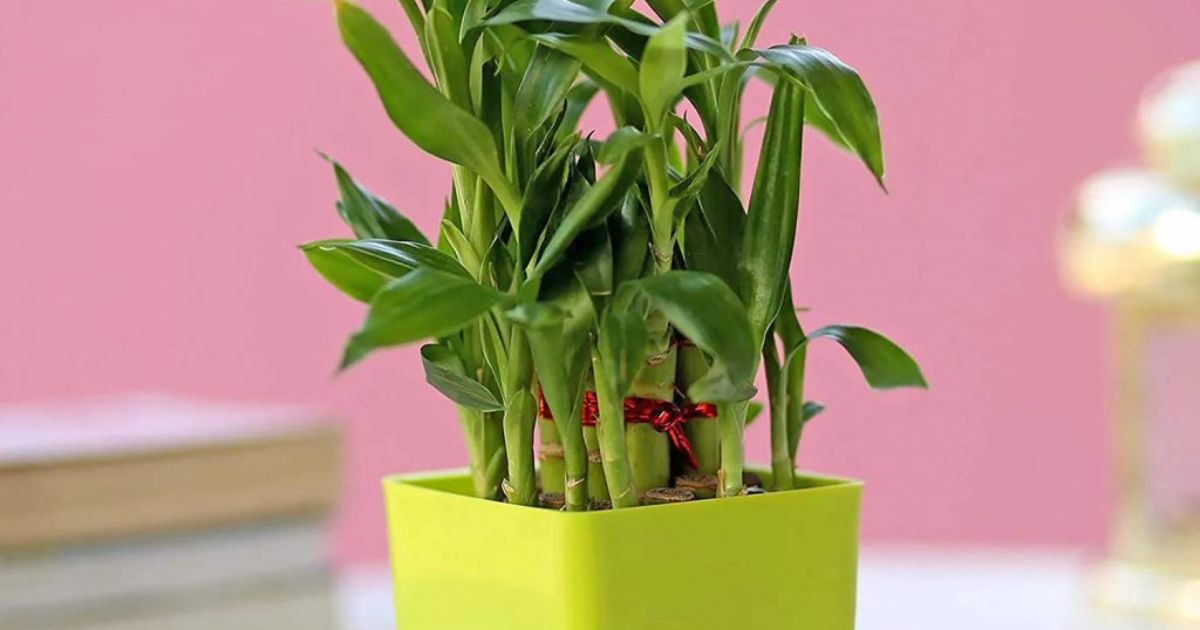
Water: Once a week, enough to cover the roots.
Lucky Bamboo is an extremely adaptable plant that can survive in low light. With slender stems and long, pointed leaves, it looks elegant on its own or as part of an arrangement.
Keep stalks in water, changing it out weekly. Mist leaves occasionally for added humidity. This resilient plant can handle low indirect light but avoid direct sun which may scorch leaves. Trim off any yellowing stems.
- Pros: Easy care, adaptable to low light, attractive upright shape.
- Cons: Requires proper water maintenance, can decline if neglected.
Brighter Blooms Benjamina Ficus Tree
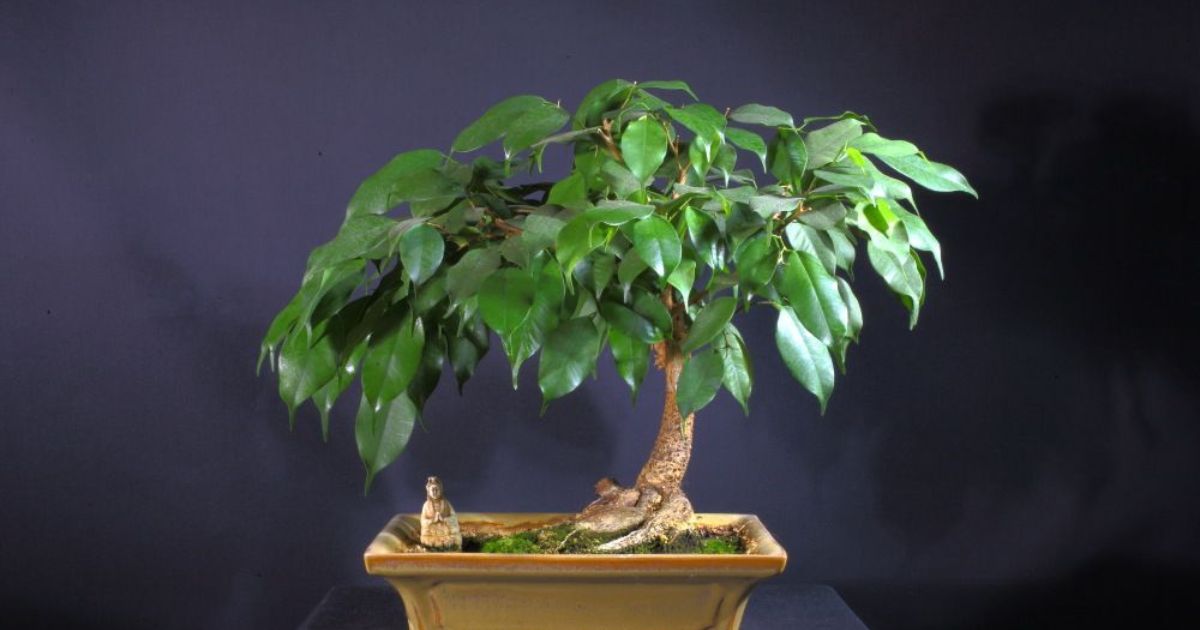
Water: Two to three times a week.
The Benjamina Ficus Tree offers graceful, cascading branches and pointed green leaves. This small tree brings elegance and the look of an outdoor plant into indoor spaces.
Despite its tropical appearance, the Ficus tree adapts well to low light indoor conditions. Allow soil to dry out between waterings and mist occasionally. Rotate the plant periodically and prune to keep its shape.
- Pros: Cascading branches and leaves, easy maintenance, handles low light.
- Cons: Can shed leaves if stressed by changing conditions.
Costa Farms Bromeliad Plant
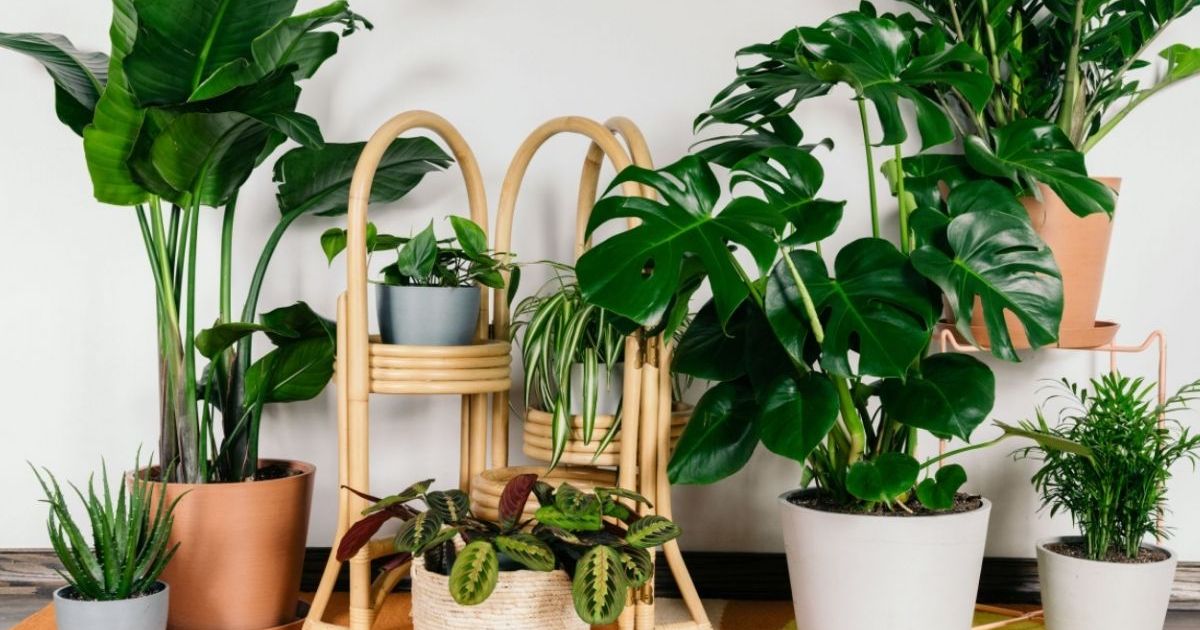
Water: When soil is dry, about once a week.
Known for their showy, colorful flower bracts and striped foliage, Bromeliads make great low-light plants. This tropical plant has intricate blushed pink and green leaves for visual interest.
Bromeliads don’t require much water or light. Water by filling the cup at the base of the leaves rather than on the soil. Medium to low indirect light allows the colors to remain vibrant. Remove dying leaves and pups can be repotted.
- Pros: Vibrant colors, low maintenance, low light tolerant.
- Cons: Blooms for a limited time. Requires specific watering method.
Costa Farms Devil’s Ivy Golden Pothos

Water: One cup of water per week.
No low-light plant roundup is complete without Golden Pothos. With its brightly-variegated yellow and green heart-shaped leaves trailing from vines, this ubiquitous houseplant is easy to grow almost anywhere.
Pothos can tolerate low light, low humidity, irregular watering, and a variety of conditions. Let soil partly dry out between waterings. Trim off any dead stems or leaves and it will continue growing. Keep soil moist but not soggy.
- Pros: Trailing vines, bright variegated leaves, hardy and adaptable.
- Cons: Can get leggy in very low light. May irritate skin and pets if ingested.
The Sill Maranta Red Prayer
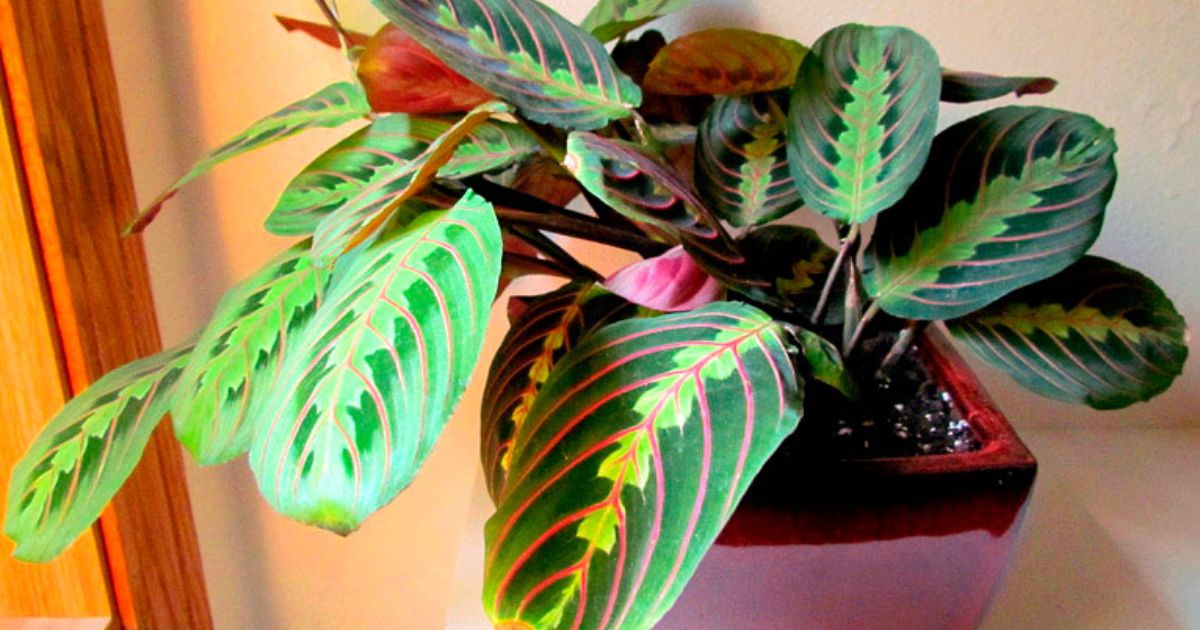
Water: Once a week.
Another variety of Prayer Plant, the Maranta Red Prayer has striking foliage with red veins and midribs. The leaves fold up at night as if praying, adding drama. The bold colors and patterns of this plant complement its low light tolerance.
Allow soil to dry out before watering again. Mist occasionally for added humidity. Remove any dried or dying leaves to encourage new growth. Keep away from drafts and direct sunlight to avoid leaf scorching.
- Pros: Beautiful red-veined foliage, folds up at night, easy care.
- Cons: Requires humid conditions and indirect light to thrive.
Costa Farms Madagascar Dragon Tree
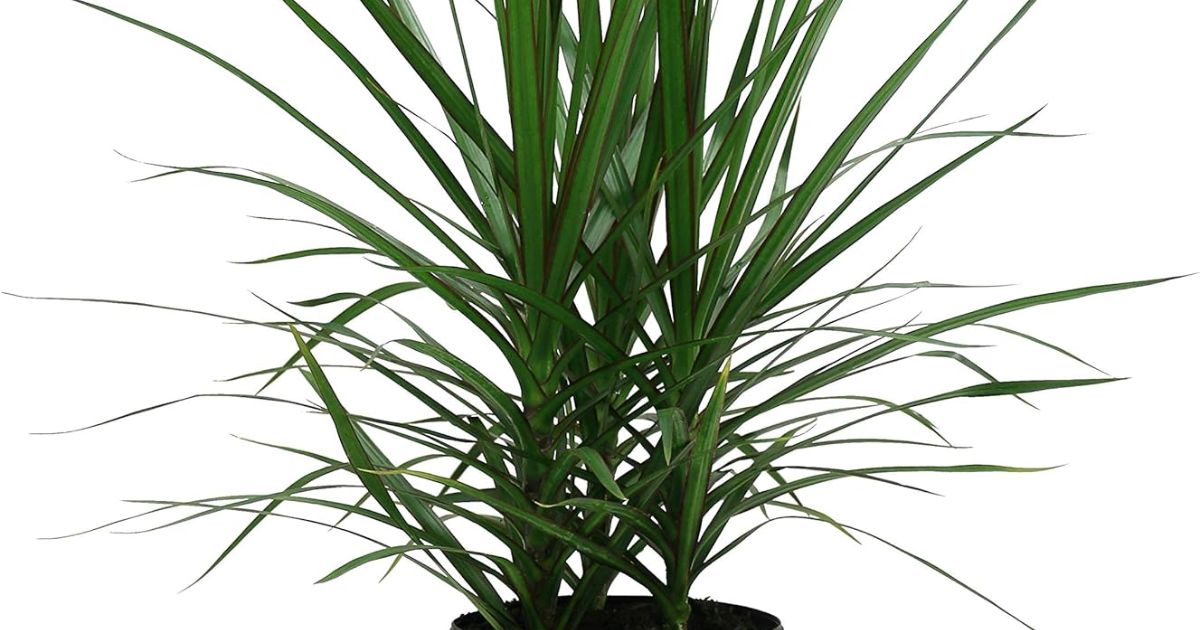
Water: Once a week.
The Madagascar Dragon Tree has an exotic, prehistoric appeal with its spear-shaped foliage sprouting from thick woody stems. As a dramatic architectural accent, this plant can grow quite tall but also does well in smaller sizes.
Despite its tropical look, the Dragon Tree adapts well as a low-light houseplant. Allow soil to dry out between occasional waterings. Dust the leaves now and then and remove any dead growth. Pretty low maintenance for such an impactful plant.
- Pros: Unique spear-shaped foliage, easy care, tolerates low light well.
- Cons: Very slow growing. Can be finicky if overwatered.
Williams-Sonoma 6″ Live Spider House Plant
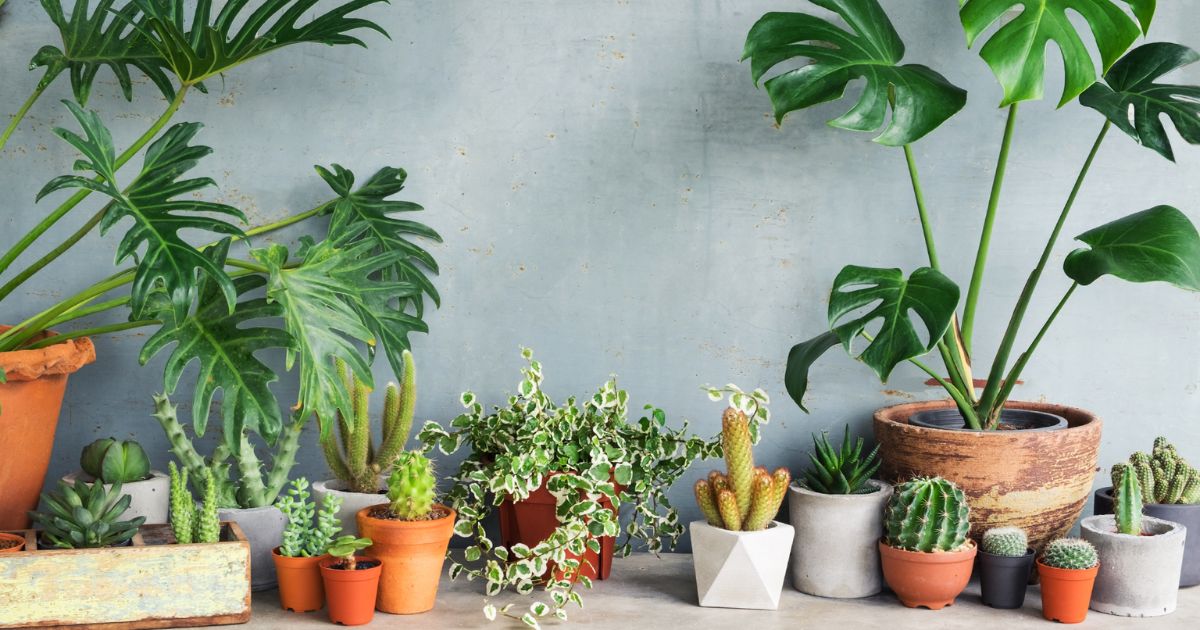
Water: Once a week.
The Spider Plant is a classic houseplant known for its long arching leaves with white stripes. Offsets dangle at the ends of the leaves, making this plant look like a spider with many legs! Spider Plants clean indoor air while thriving in low light.
Allow soil to dry out between waterings and remove brown leaf tips as needed. Keep away from direct sun which can scorch the foliage. The pups can be propagated in water or soil for new plants.
- Pros: Trailing, striped foliage, air purifying, low maintenance.
- Cons: Can become root bound or leggy if neglected.
House Plant Shop Wax Plant

Water: Once a week.
The Wax Plant, or Hoya, is prized for its waxy, cup-shaped flowers that emerge in summer. Its trailing vines and oval succulent-like leaves add charm year round. Slow but steady growing, this low light plant is worth the wait for its mesmerizing blooms.
Water when partly dry and mist occasionally to increase humidity. Prune back and remove any dead stems or leaves. Provide bright, indirect light to encourage flowering. Rotate the plant periodically for even growth.
- Pros: Waxy fragrant flowers, trailing vines, easy care.
- Cons: Slow growing, can take time to bloom. Requires patience.
American Plant Exchange Monstera Plant

Water: Moderate watering; every one to two weeks.
The Monstera Plant is loved for its iconic split leaves and jungle vibes. As it matures, the leaves develop dramatic cutouts and holes that add depth and visual interest. This low-light plant makes any room feel more tropical.
Monsteras can handle low to medium indirect light. Allow the soil to partly dry out between waterings and mist occasionally for humidity. Stake or trellis the vines as needed and prune off dead leaves.
- Pros: Iconic split and holed leaves, adds tropical style, low light tolerant.
- Cons: Needs staking or support for vines. Takes time to mature.
Delray Plants Sago Palm
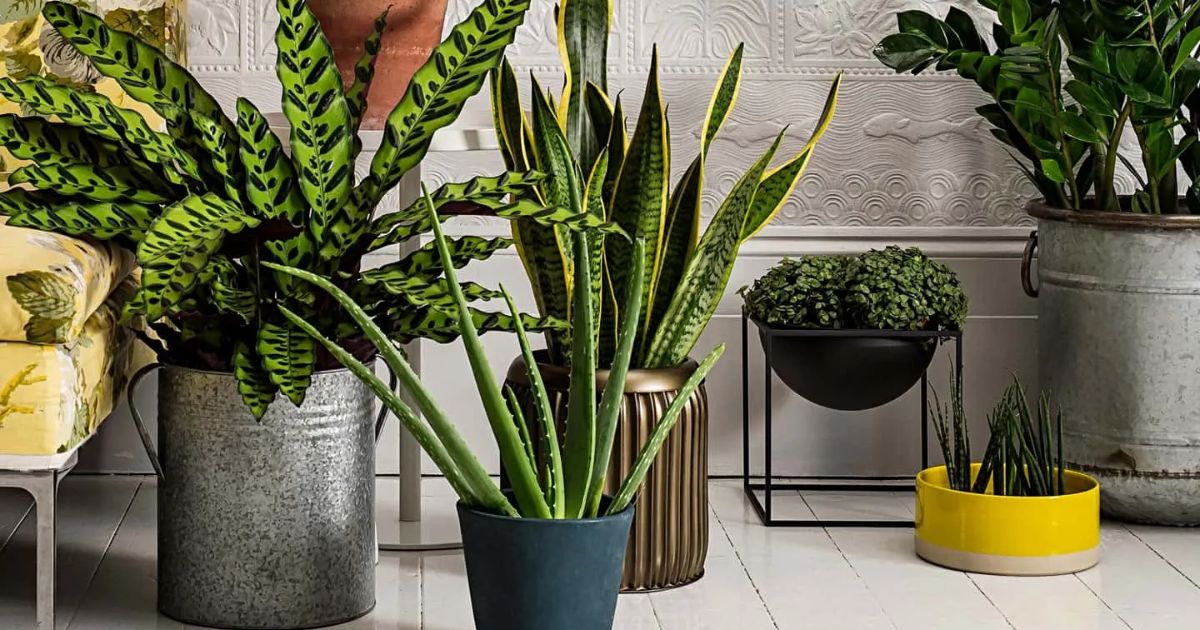
Water: One cup of water every two weeks.
Resembling a palm but actually a cycad, the Sago Palm has thick trunks topped with arching leaves. Easy to grow as a low-light plant, its exotic texture is an interior accent worth making room for.
Sago Palms prefer indirect light and moderate water about every other week. Allow soil to dry out before watering again. Wipe dust off the leaves now and then and remove spent leaves as needed.
- Pros: Exotic tropical texture, easy maintenance, handles low light.
- Cons: Very slow growing. Can be finicky if overwatered.
The Sill Staghorn Fern
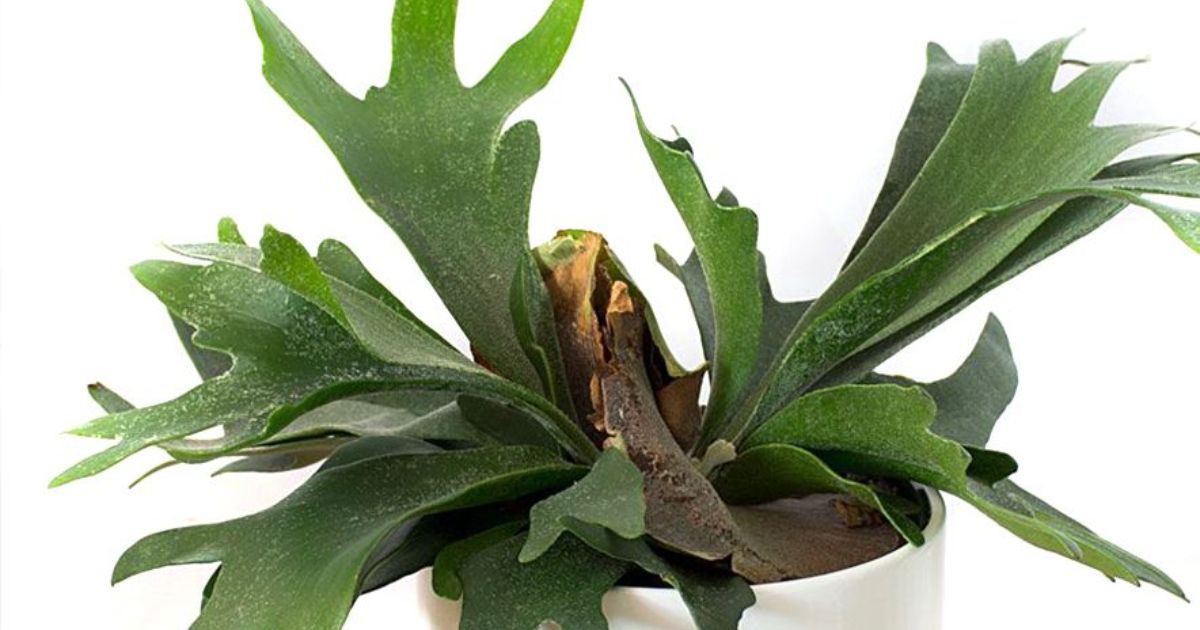
Water: Once a week, less during colder months.
The Staghorn Fern makes a unique display with its fuzzy, curled antler-like fronds. Often grown on a mount, plaque, or hanging basket, its form resembles a taxidermy trophy which adds drama. This fern grows well in low to medium indirect light.
Keep the Staghorn Fern moist but not soaked and mist daily. Occasional soaking can remove any built up fertilizer salts. Dying fronds will need to be removed over time.
- Pros: Antler-like fronds, thrives on mounts or in baskets, low light tolerant.
- Cons: Requires consistent moisture, pruning of dead fronds.
The Sill Heartleaf Philodendron

Water: Every one to two weeks.
A vining plant with heart-shaped leaves, the Heartleaf Philodendron is a trailling beauty ideal for shelves. The glossy green foliage stays neat and compact while this plant thrives in low light conditions.
Allow the soil to partly dry out before watering again. Remove any dead, drying leaves or stems to keep it looking fresh. Mist occasionally for added humidity. Keep away from direct sun to avoid leaf scorch.
- Pros: Heart-shaped leaves, trailing habit, handles low light well.
- Cons: Can get leggy if it doesn’t get enough light.
Costa Farms Dieffenbachia Plant
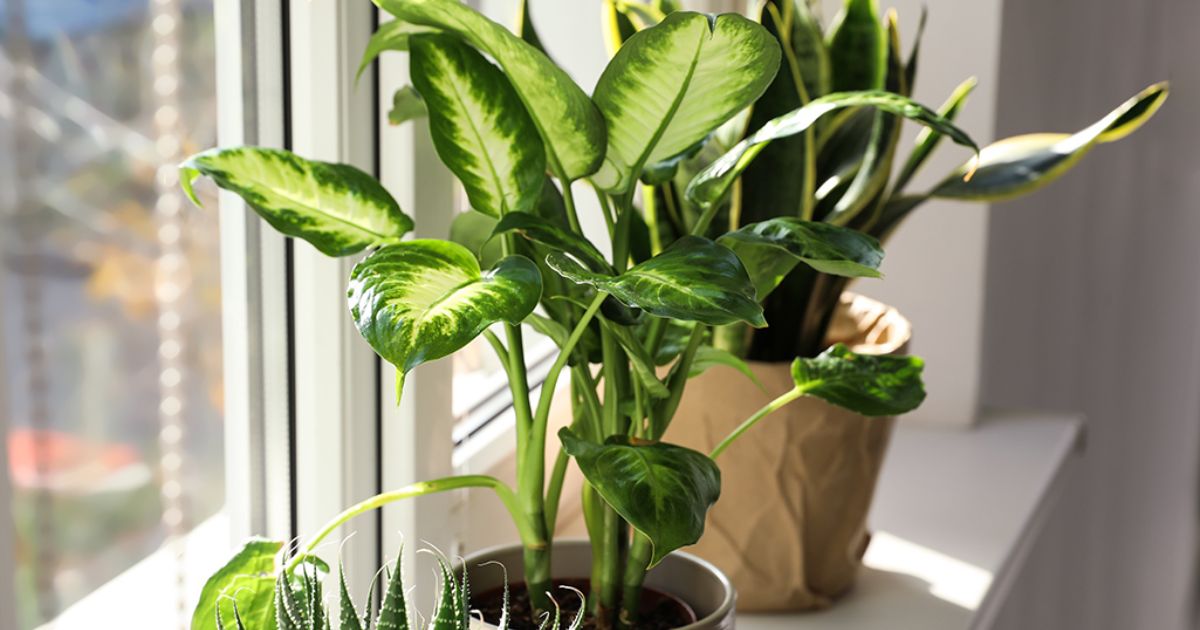
Water: Once every two weeks.
Dieffenbachia offers great texture with its large, oblong leaves boldly variegated in white. Also known as the Dumb Cane, this tropical plant adds bright color and height in shady indoor garden corners.
Only needing low to medium light, Dieffenbachia should be kept moist but not overly wet. Mist leaves occasionally for humidity and wipe dust. Remove any spent leaves or dead stems to keep it tidy.
- Pros: Variegated leaves with bright color, adds height, low light tolerable.
- Cons: Toxic if ingested. Can get leggy with very low light.
Thorsen’s Greenhouse Calathea Peacock
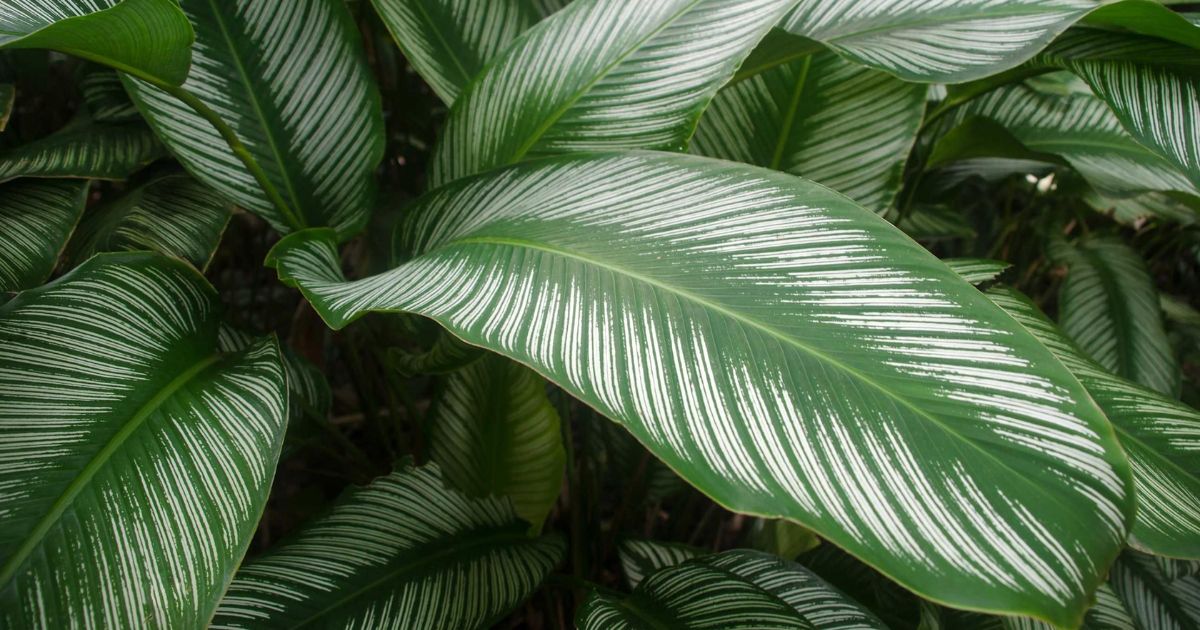
Water: Every two to three days.
The eye-catching Calathea Peacock has purplish leaves with wild patterns said to resemble a peacock’s plumage. This plant’s colorful foliage makes a statement in low light conditions. Its leaves also fold up slightly at night for added visual drama.
Keep the Calathea Peacock’s soil consistently moist. Water with distilled or rainwater whenever the top half of soil dries. Mist to provide needed humidity and avoid direct sun.
- Pros: Vibrant patterned foliage, folds leaves at night, low light tolerant.
- Cons: Requires consistent moisture and humidity.
Bloomscape Variegated Schefflera

Water: Once every 10 days.
The Variegated Schefflera, also known as Umbrella Plant, has shiny green leaves with creamy gold edges. It adds bright, eye-catching color and tropical flair as a low-light houseplant. With time and the right conditions, this shrub-like plant can grow quite tall.
Allow soil to partly dry between watering and mist occasionally for humidity. Rotate the plant periodically to encourage even growth towards light. Wipe dust off leaves and remove dead growth over time.
- Pros: Colorful variegated leaves, grows tall, handles low light.
- Cons: Can be prone to spider mites. Takes time to reach full size.
Bloomscape Money Tree
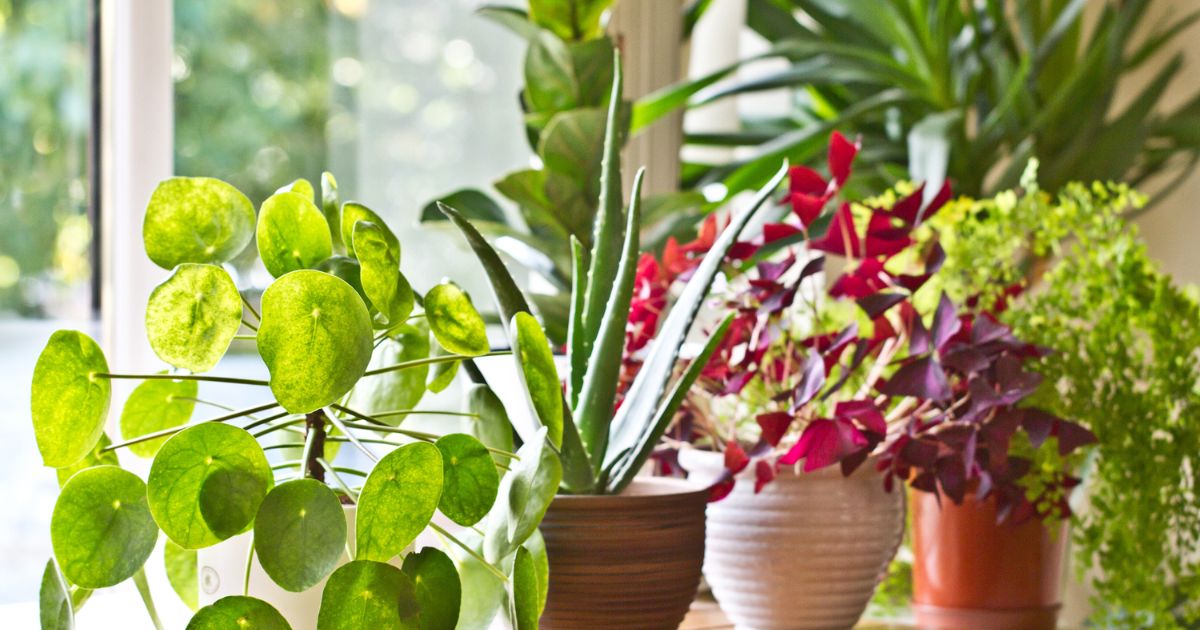
Water: Six to eight ounces every three weeks.
Believed to bring good luck and fortune, the Money Tree has braided trunks topped with lush palm-like leaves. Place this small tree in an office, entryway, or anywhere you’d like more prosperity! It adapts well to low light.
Money Trees prefer occasional but deep watering. Allow the soil to dry out before soaking again. Dust the leaves regularly and turn the plant to encourage even growth.
- Pros: Braided trunks, said to attract wealth and luck, low light tolerant.
- Cons: Sensitive to tap water. May drop leaves if stressed.
The Sill Red Anthurium
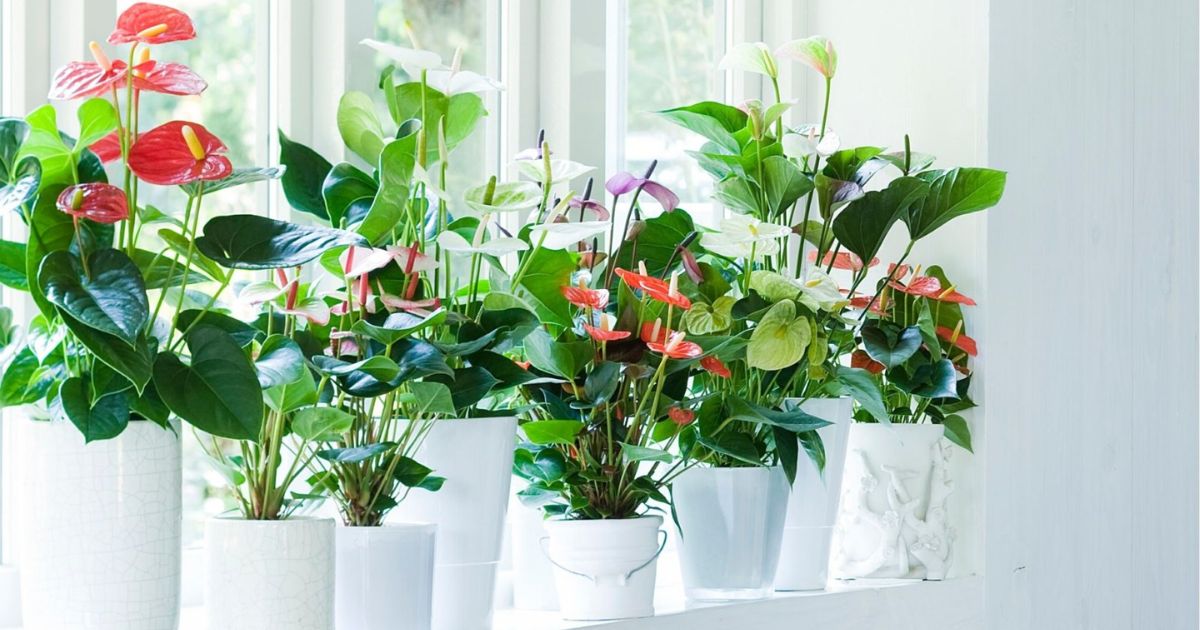
Water: Every two to three days.
The large, glossy leaves of the Red Anthurium have prominent red or pink central veins and midribs. Contrasted with the dark green, its colors pop. The red blooms rising from the foliage add drama for weeks at a time. This tropical plant thrives in low light beyond its bloom period.
Keep the soil consistently moist. Water when the top few inches become dry. Apply fertilizer every few weeks while flowering. Remove spent flowers and dead leaves when needed. Avoid direct light which can burn leaves.
- Pros: Glossy leaves, bold red flowers, tolerates low light well.
- Cons: Can be prone to root rot if overwatered. Doesn’t flower year-round.
The Sill Philodendron Brasil
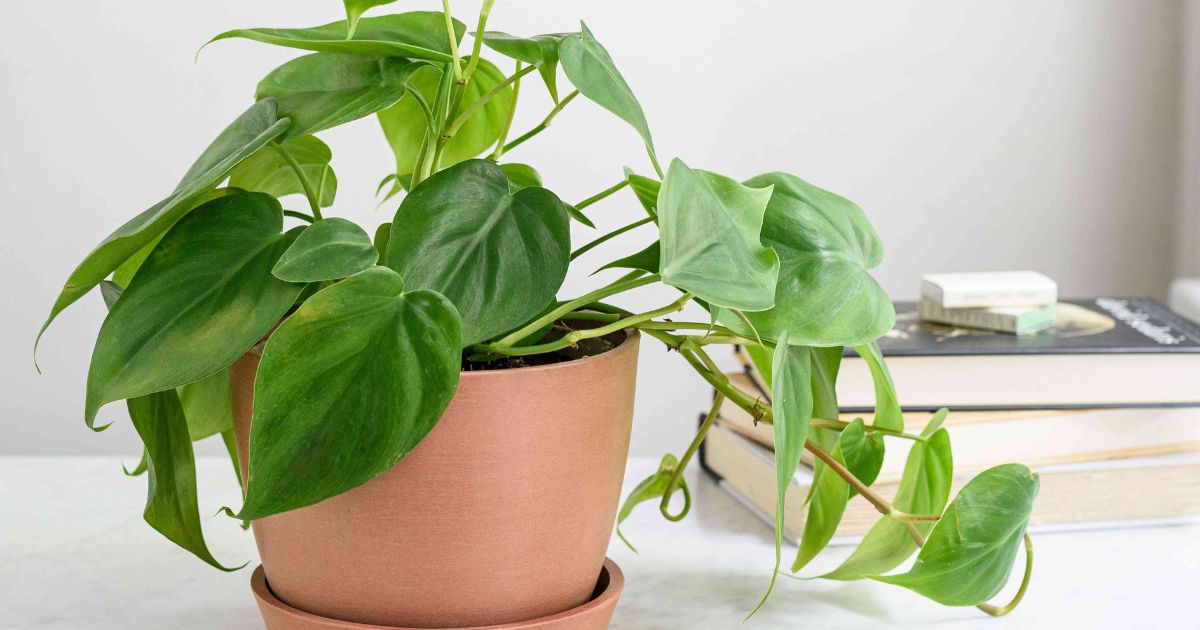
Water: Once a week.
The Philodendron Brasil brings vibrance with its gold stripes radiating over each leaf. Trailing or climbing vines and large leaves add striking texture and color in low light environments.
Allow the top inch of soil to become dry between watering. Mist occasionally to boost humidity. Remove any dead or damaged leaves over time. Keep away from direct sunlight to prevent leaf scorching.
- Pros: Bold variegated leaves, fast growing, handles low light.
- Cons: Can become leggy if light is too dim. Toxic if ingested.
The Sill ZZ Plant
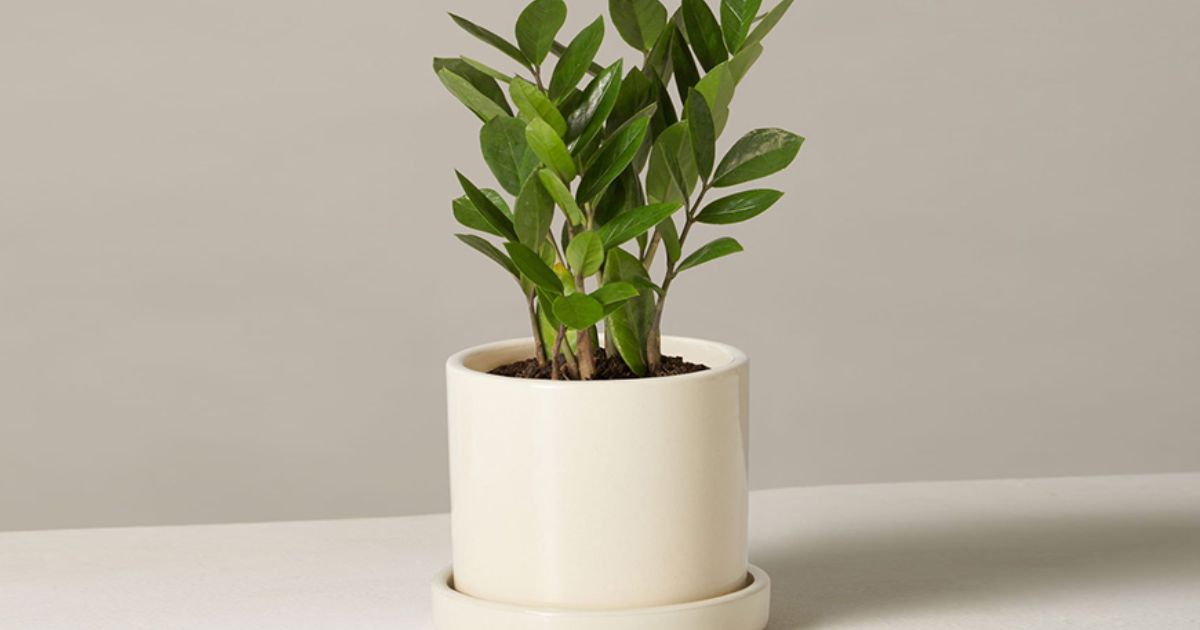
Water: Every two to three weeks.
The ZZ Plant, Zamioculcas zamiifolia, is often called the “eternity plant” for its ability to withstand neglect and very low light. Its glossy leaves add freshness while its arching stems offer visual interest and height.
Tolerating a range of conditions, the ZZ Plant needs less frequent watering and benefits from occasional dusting of leaves. Yellow leaves indicate overwatering. Let soil dry out well between watering.
- Pros: Glossy, arching foliage, extremely tolerant of low light, low maintenance.
- Cons: Slow growing. Can be prone to root rot if overwatered.
FAQ’s
What Is the Best Indoor Plant for Low Light?
The best indoor plants for low light spaces are pothos, Chinese evergreen, peace lily, snake plant, philodendron, zebra plant, and cast iron plant. These tolerant houseplants can readily adapt to low light while staying lush and healthy.
Which Indoor Plant Does Not Need Light?
ZZ plants and snake plants are some of the best indoor plants that don’t need light. They easily tolerate very low light, even prospering weeks in dark spots. Other low light plants like pothos and philodendrons also do quite well in low light conditions.
Why Trust Us?
Our gardening experts have years of experience selecting, growing, and caring for all types of houseplants. We’ve thoroughly researched the best low light indoor plants that can readily adapt to shady interior spaces without much sun. Whether you have a dark corner or a low light room, we’re here to help you pick the ideal plants to brighten your home and purify your air.
Conclusion
Low light doesn’t have to limit your indoor gardening. Many houseplants actually prefer shadier spots and are great options for brightening up rooms with minimal natural light. Plants like pothos, Chinese evergreen, ZZ plant, philodendrons, ferns, and palms can all thrive with proper care.
When choosing low-light plants, opt for varieties with foliage that naturally grows in the understory or forest floor, where light is filtered. Allow soil to partly dry out between waterings and avoid overwatering. Go for plants with thicker or waxy leaves which retain moisture better in low humidity. Mist leaves occasionally for moisture. Dust plants regularly and remove dead growth to keep them looking their best.
With the right selections and care, your low-light houseplants can transform dark corners, shelves, and spaces into lush indoor oases while purifying the air. Bring vital tranquility and life into your home with these hardy green companions adapted for shadier surroundings.











